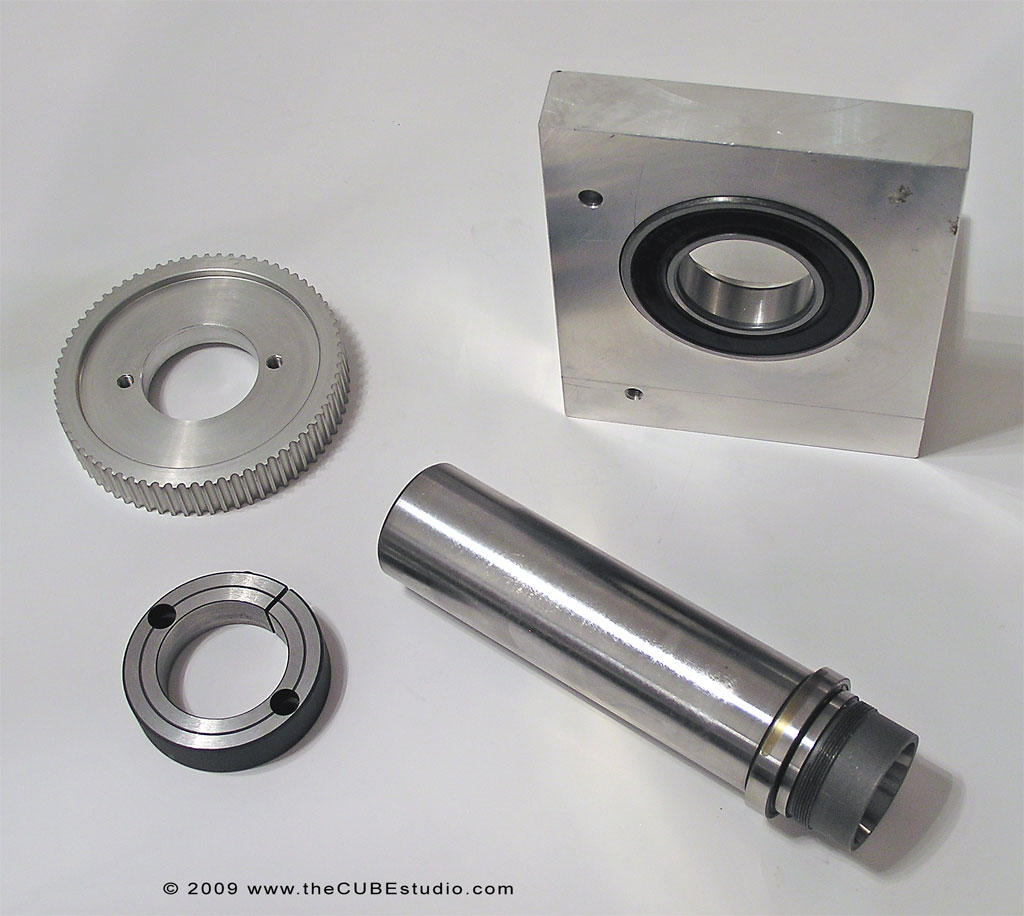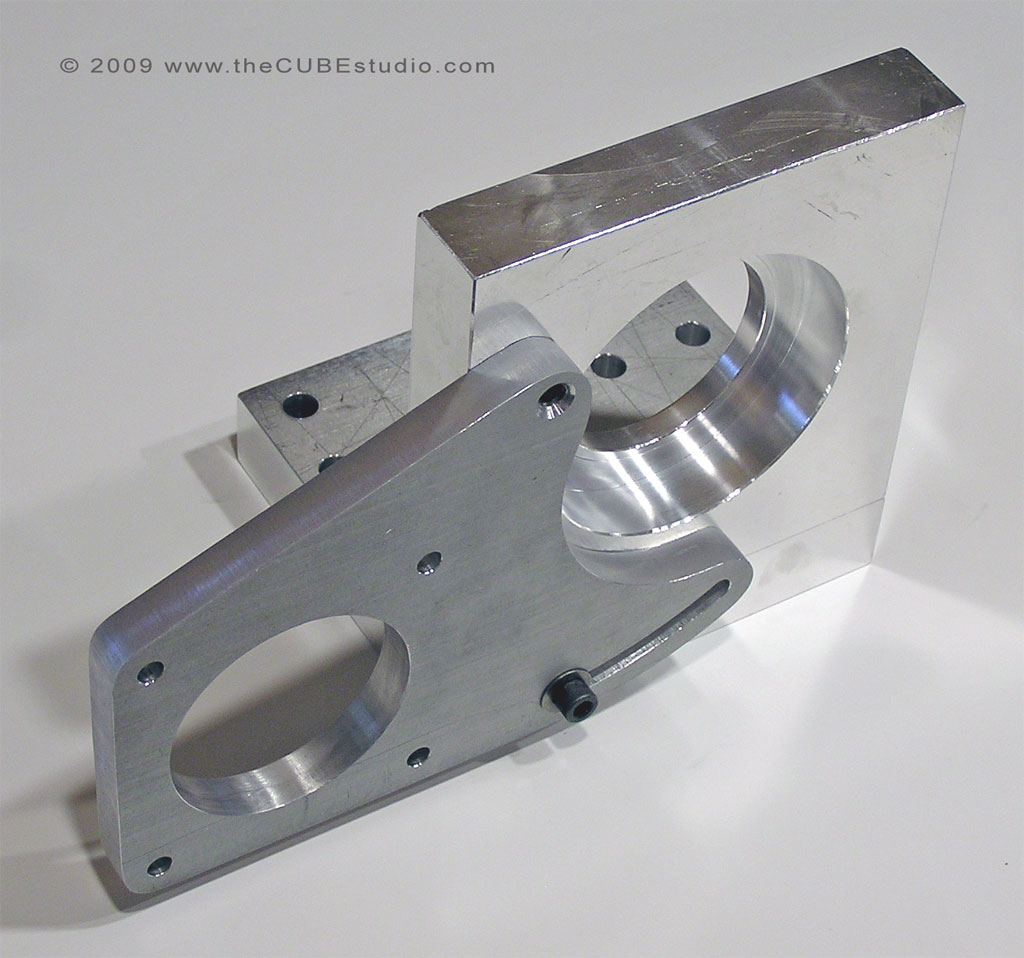951
Show"N"Tell ( Your Machines) / Re: Success! Mini Machining Center under Mach3 control - Video link
« on: October 05, 2009, 07:55:34 AM »
These are the new drive parts. Older trapezoid tooth belt is gone, replaced by newer GT2 type. Quieter and can handle a lot more power. This time rather than making a pulley from scratch, I took an off-the-shelf pulley and modified it by cutting out the center and mounting it to a stock clamping collar which is comes already drilled for mounting a pulley. Between the stock pulley and clamp collar, I saved several hours over starting from scratch. Collar is bored for a slip fit on the spindle . . no more threads. Preload will be accomplished differently. More on that later:
Spindle is out of a PhaseII brand 5C spin indexer. Still an import, but about three times as expensive as the normal junk and it is much better quality. Roughness in center portion of the spindle is from me reducing the dia slightly in that area with a coarse zirconia flap wheel to ease bearing press and reduce the interference fit on the rear bearing for preload purposes. Front bearing (next to shoulder will have full press fit. I will probably be making my own spindle, but for now this is easier.

Spindle is out of a PhaseII brand 5C spin indexer. Still an import, but about three times as expensive as the normal junk and it is much better quality. Roughness in center portion of the spindle is from me reducing the dia slightly in that area with a coarse zirconia flap wheel to ease bearing press and reduce the interference fit on the rear bearing for preload purposes. Front bearing (next to shoulder will have full press fit. I will probably be making my own spindle, but for now this is easier.





 I have not thought this through at all . . just a mad thought.
I have not thought this through at all . . just a mad thought. 